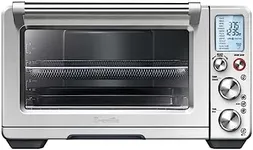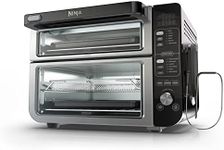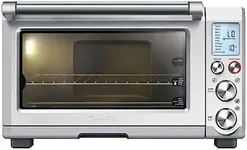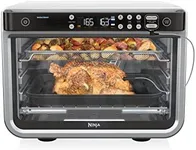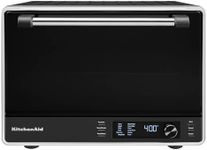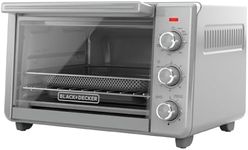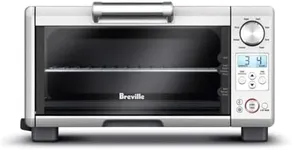Buying Guide for the Best Countertop Ovens
Choosing a countertop oven can make your kitchen more versatile and efficient, especially if you want to bake, toast, roast, or broil without using a full-sized oven. The right countertop oven can save space, energy, and time, but picking the best one for your needs means understanding the key features and how they relate to your cooking habits. Think about what you plan to cook most often, how much space you have, and how many people you usually cook for. This will help you focus on the specs that matter most for your lifestyle.CapacityCapacity refers to how much food the oven can hold at one time, usually measured in liters, cubic feet, or by describing what size pizza or number of slices of bread it can fit. This is important because it determines whether you can cook meals for just yourself, a couple, or a whole family. Small ovens (under 15 liters or fitting 4 slices of bread) are great for singles or small kitchens, while medium (15-25 liters) and large (over 25 liters or fitting a 12-inch pizza) are better for families or those who like to cook bigger meals. Think about the largest dish you’d want to make and choose a capacity that fits your regular needs.
Power (Wattage)Power, measured in watts, tells you how quickly and evenly the oven can heat up and cook food. Higher wattage (usually 1500 watts or more) means faster preheating and cooking, which is useful if you’re often in a hurry or want to roast or bake. Lower wattage (under 1200 watts) may be enough for simple toasting or reheating. If you plan to use the oven for more than just toast, look for a model with higher wattage to ensure it can handle a variety of cooking tasks.
Cooking FunctionsCooking functions are the preset modes the oven offers, such as bake, broil, toast, convection, air fry, or pizza. More functions mean more versatility, letting you try different recipes and cooking styles. Basic ovens may only toast and bake, while advanced ones can air fry, dehydrate, or even rotisserie. If you want an all-in-one appliance, look for a model with multiple functions. If you only need to toast and bake, a simpler model will do the job.
Temperature RangeThe temperature range shows the lowest and highest temperatures the oven can reach, usually from around 150°F to 450°F (65°C to 230°C). A wider range gives you more flexibility for different recipes, from slow roasting to high-heat broiling. If you like to experiment with various dishes, choose an oven with a broad temperature range. If you mostly reheat or toast, a basic range will be enough.
Controls and DisplayControls can be manual dials or digital touchpads, and the display may show time, temperature, and cooking mode. Digital controls offer more precision and often include timers and presets, while manual dials are simple and reliable. If you prefer easy, straightforward operation, manual dials are fine. If you want more control and convenience, especially for complex recipes, digital controls are a better fit.
Size and FootprintSize and footprint refer to the physical dimensions of the oven and how much counter space it will take up. This is important if you have a small kitchen or limited counter space. Measure your available space before shopping and compare it to the oven’s dimensions. Choose a model that fits comfortably in your kitchen without crowding other appliances.
Ease of CleaningEase of cleaning depends on features like removable crumb trays, nonstick interiors, and dishwasher-safe accessories. Ovens that are easier to clean save you time and effort after cooking. If you plan to use your oven frequently, look for features that make cleaning simple, such as a pull-out crumb tray and wipeable surfaces.

